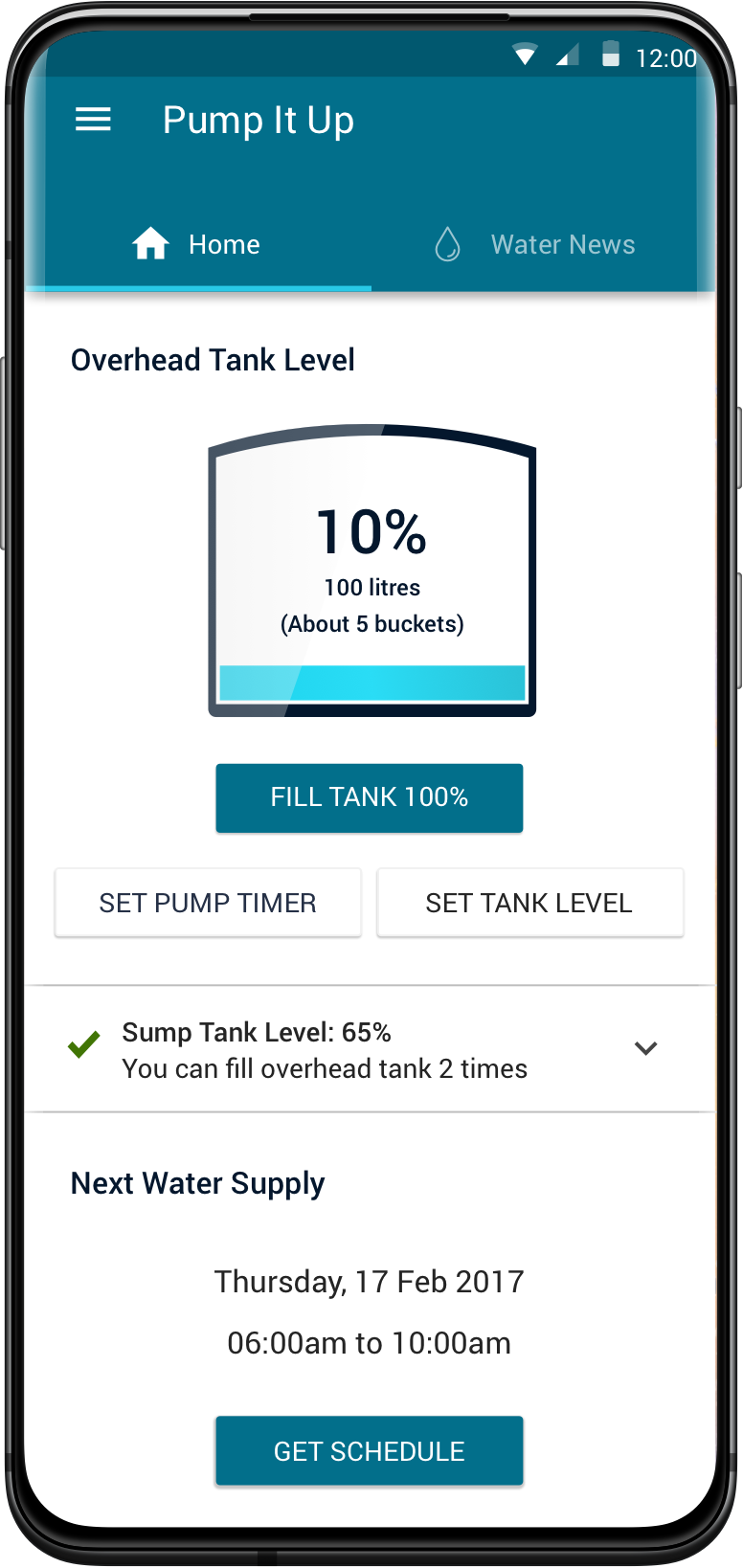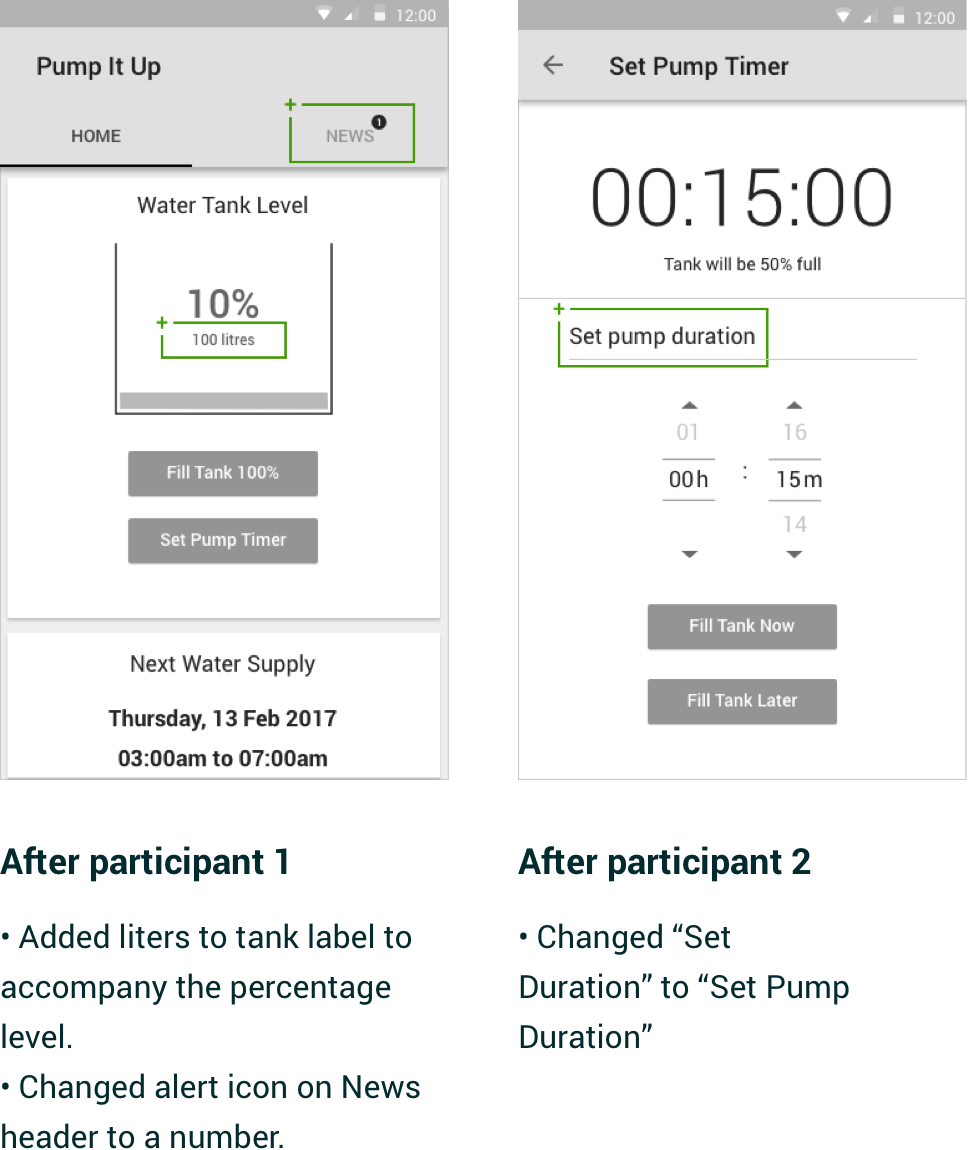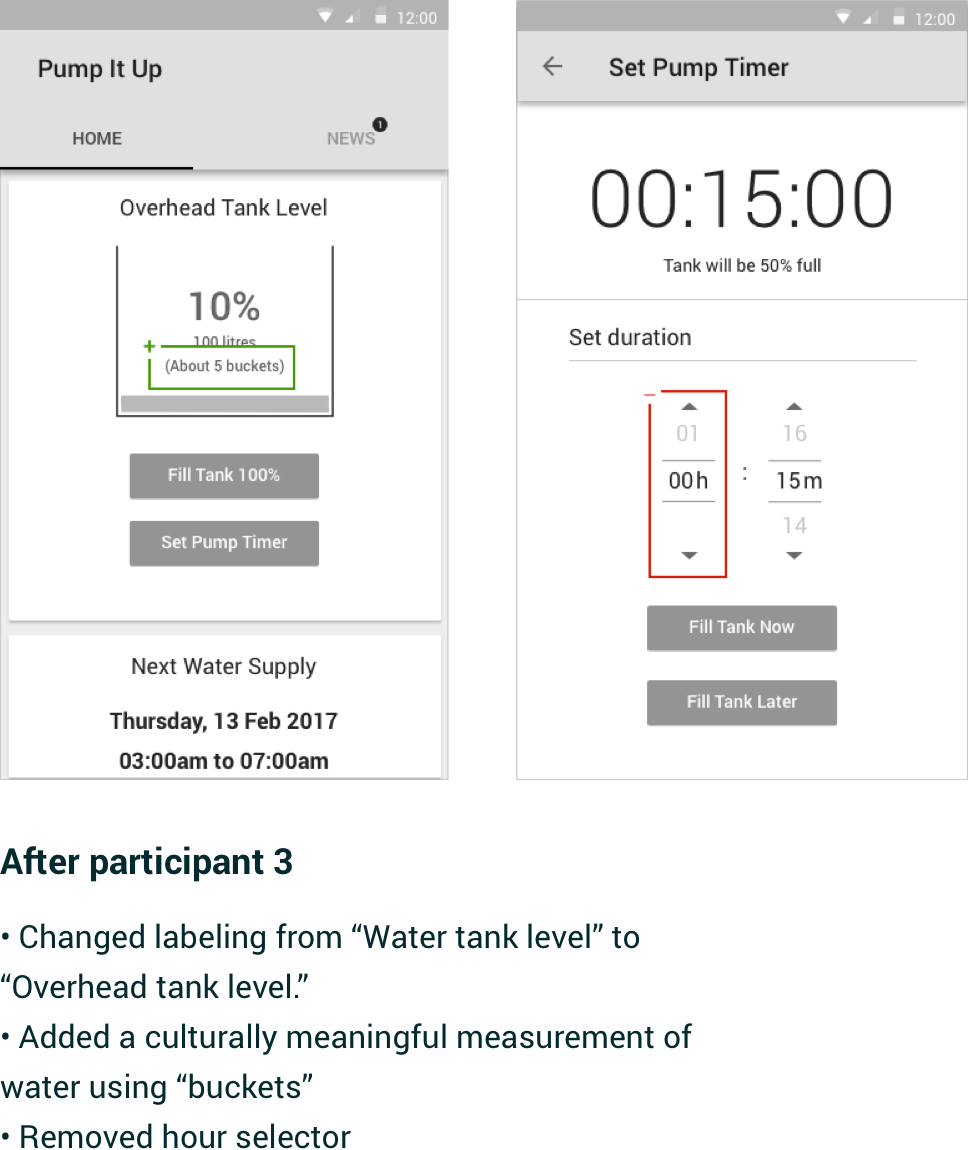
Pump It Up
Exploring ways to prevent water waste in Indian homes through design thinking.
ROLE
Research & Ideation
Visual & Interaction Design
RESPONSIBILITIES
User Research, Usability Studies, Interaction & Product Design
TIMELINE
Human Centered Design & Engineering Capstone Project
Jan - Mar 2017
The Problem
In India, water is provided to households in scheduled intervals. Most stand-alone homes use an underground sump tank to collect the government supplied water and pump that water into rooftop overhead tanks. This process is inefficient and involves uncertainties which cause inconvenience to residents.

The water system setup in a typical Indian home.
How might we reduce the water waste in Indian homes resulting due to inefficient and reactive water pumping setup and equipment?
Goal Of The Project
The expectation of the Capstone project was to conduct research to identify the problem and develop a concept solution to address the problem.
Hypothesis
Coming from a household with similar water setup and having experienced the problem first hand, I believed the solution was to automate the water-pump so that people didn't have to remember when to switch off the water pump.
By designing an automated water-pump that cuts water-supply to the overhead water tank when it is full, we will be able to stop the tank from over-flowing, thus saving water
Research
In order to validate our hypothesis, we spoke to 5 Indian households. While I was fairly certain what the problem and solution were, I was still curious to validate my assumptions and hypothesis. My team and I conducted interviews & contextual inquiry with users in India remotely through a video call.
Methods Used
Contextual Inquiry (Remote)
User Interviews (Remote)
Research Insights
The research proved my hypothesis wrong. While people agreed that water waste occurs due to human errors, they did not occur as frequently as I initially believed. However, the research helped surface several other big issues that we were not aware of.

Automated pumps were more common
2 out of 5 people we spoke had automated systems installed in their homes and I under-estimated how many people had automated pumps.

People are very cost-conscious
The people who did not have automated pumps were aware of their availability but chose not to install due to cost concerns.

Technical complexity was a concern
People chose not to install automated pumps because of the technical complexity involved in installation and troubleshooting.

People care about the societal impact of water
Individuals feel concerned about the limited availability of water in India and feel their behavior have an impact on it.
Icon Credits: BomSymbols, Weltenraser from the Noun Project
“It’s a major major issue. I read an article about the water wars in Mumbai. I really believe that wars in the future will be about water."
“We thought about installing the automated pump a few years ago but it required a lot of electrical changes and if it breaks our water supply stops till they come and fix it."
Journey Map
The insights from the research helped us create a journey map to get a closer understanding and visualize people's interaction with their water systems.

The journey of a person's interaction with the water systems.
Prioritization
The research helped us identify 12 major user needs. In order to scope our solution, we created an online card-sorting test using Optimal Sort. From the data, we prioritized the top 6 user needs.






Wireframes & Usability Studies
I created wireframes to accomplish five user tasks based off of the six prioritized user needs.


Usability Studies
We tested the solution hypothesis with five people using the RITE method and these tests provided great insights and helped us iterate to make the app more intuitive.


Final Solution
We incorporated our findings from our low fidelity usability study and created a final, high fidelity prototype of the Pump It Up mobile app. We added information about the sump tank level, created a way to fill the overhead tank by percentage, and made some smaller, polish and color changes to bring the app together.

Participants mentioned that knowing the sump tank level information is critical to fill the overhead tank.

People said they wanted to fill the tanks not just by time (eg 20 minutes of pump ON time), but also by tank level (Eg: 50% tank).

Knowing the government water supply schedule & regional water news was one of the top priorities for the people.
Contextual Diagram
The diagram below explains how the app connects to the various touchpoints in the water management process in a typical home.

Connecting the dots together.
Outcomes
This project was a great opportunity for us to learn about a social issue and use Design Thinking to find a solution to the problem. I was very fortunate to work with a talented team of PMs and designers. I got to learn a lot about
conducting research and pivoting at the right time.
The Pump It Up project won the Best Capstone Project Award that year during the Human-Centered Design & Engineering Capstone Showcase.

Other Works
Designed & Coded by Setu Kathawate © 2019